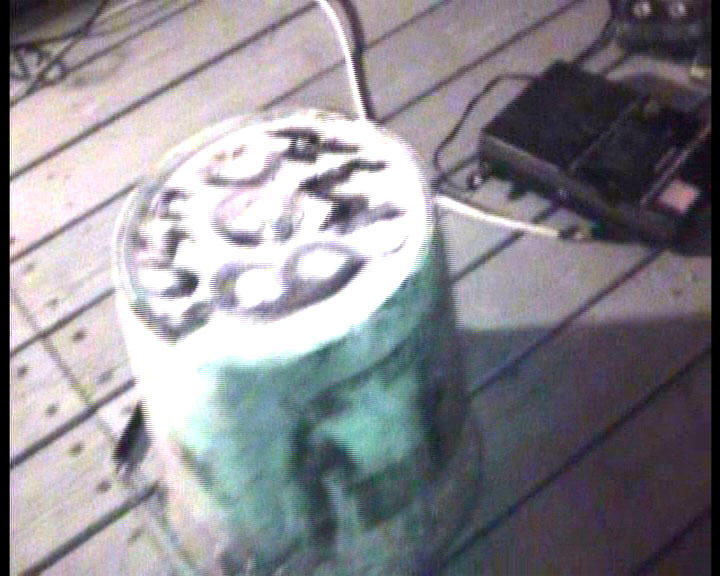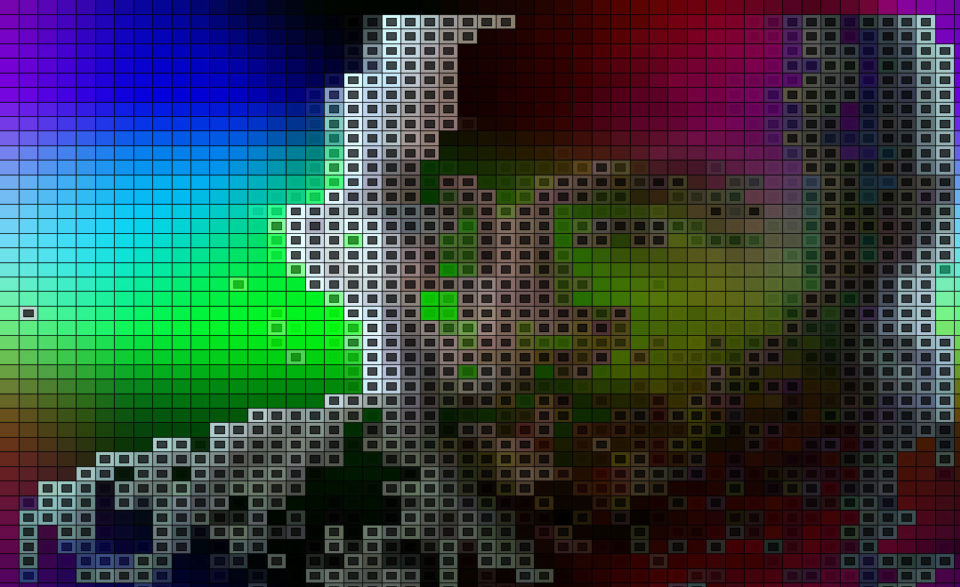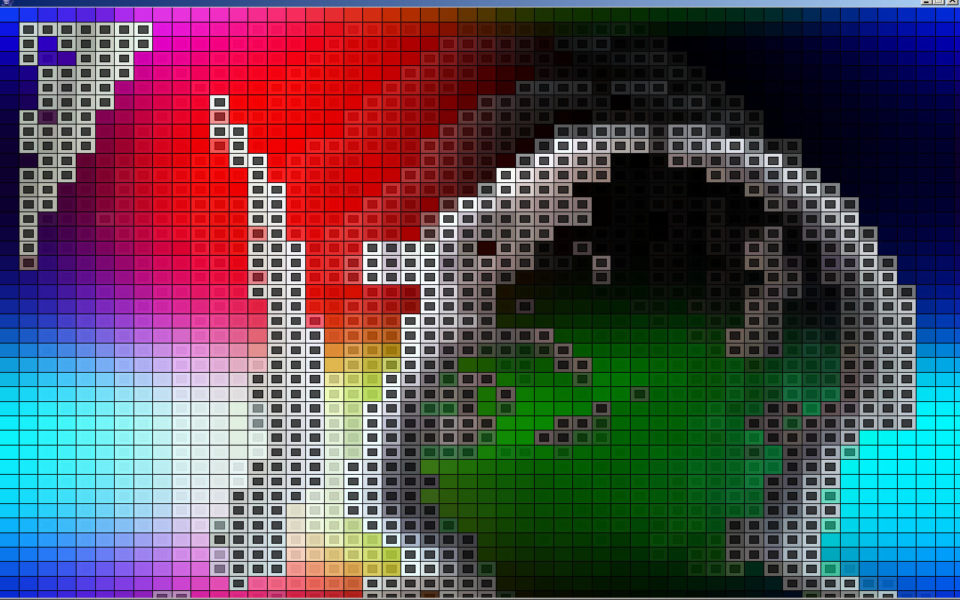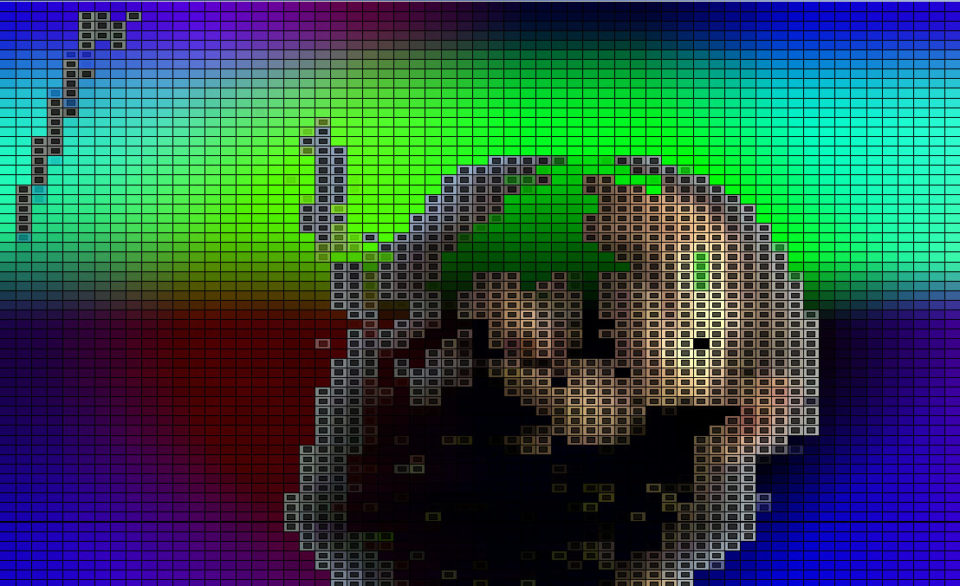A beach party is progressively invaded by digital art installations
The software automas living inside Fagocitosi feed on shapes.
The frames captured through the camera constitute the living
environment for the automas. They walk through the imagery according
to a set of rules determining social and natural balances (co-relating
population density to food availability, automa population to
demographic growth, noise, and so on).
Automas replicate through visual feedback: an algorythm identifies the
presence of visual feedback in the various frames (visual pattern
recognition with space and time translations), thus determining the
When and How of the automa’s reproduction mechanisms.
[oSTIA lIDO, rOMA, iTALIA - 16/06/2006] Memory. Embedded into a happy beach party. The Circo di Sabbia, an event created by Elettronica Romana and Remix, with the support of electronic artists such as Max Durante and Modern Heads, has created an important space for expression through arts. The painters partecipating in MarteLive (a yearly art contest happening in Rome, across several venues) setup an interesting exhibit, featuring dozens of works and several live-painting performances. Among them Fagocitosi proposed a journey through memory. An installation. An altar coming out from parallel layers of perception. Ideas and drawings on a totem that ritually exposed the artists' intimacy , and its evolution through time. The sound, contained and coming out of the installation components, was played back at low fidelity by using all sorts of small radios, tape-recorders, audio players, giving life to buckets, shoeboxes and tin cans: everything becoming a relic of the artists' memory. And everything progressively assuming the role of a portal to a parallel reality into which the viewer wants to dive, losing himself in the act of remembering. By moving inside the installation's space, with music, sound and voices coming out from unexpected places, every noise becomes a materialization of a thought, of a remembrance. Then came contamination: as a virus, Fagocitosi expands, progressively occupying all the available space. In this way a huge video appears, telling deaf tales of isolation and of creativity: the viewers can see the author chopping wood with axes and tools, and creating music and other works of art; everything in a time long gone, alive only in the memory of the author. Another projection appears on the beach, on a crumbled sheet. Burnt and tortured photos are projected, progressively obfuscating, just like thoughts dimming through time. The evening advances and everything becomes dynamic, evolving shapes and content. Up until the end. The end is the time of Fagocitosi. A software art installation is moved through all the other "infected" spaces. A camera captures the images of the installations, feeding them to software automas that eat them up by processing the images of things. The product of this food chain is sent back again through a projector pointed on those same objects being eaten, showing their progressive death, represented by black light. One by one every thing dies, chewed, swallowed and digested. Fagocitated. Last act: the Fagocitosi of the artists, eaten up by their own work of art.

![[ AOS ] Art is Open Source](https://www.artisopensource.net/network/artisopensource/wp-content/uploads/2020/03/AOSLogo-01.png)


